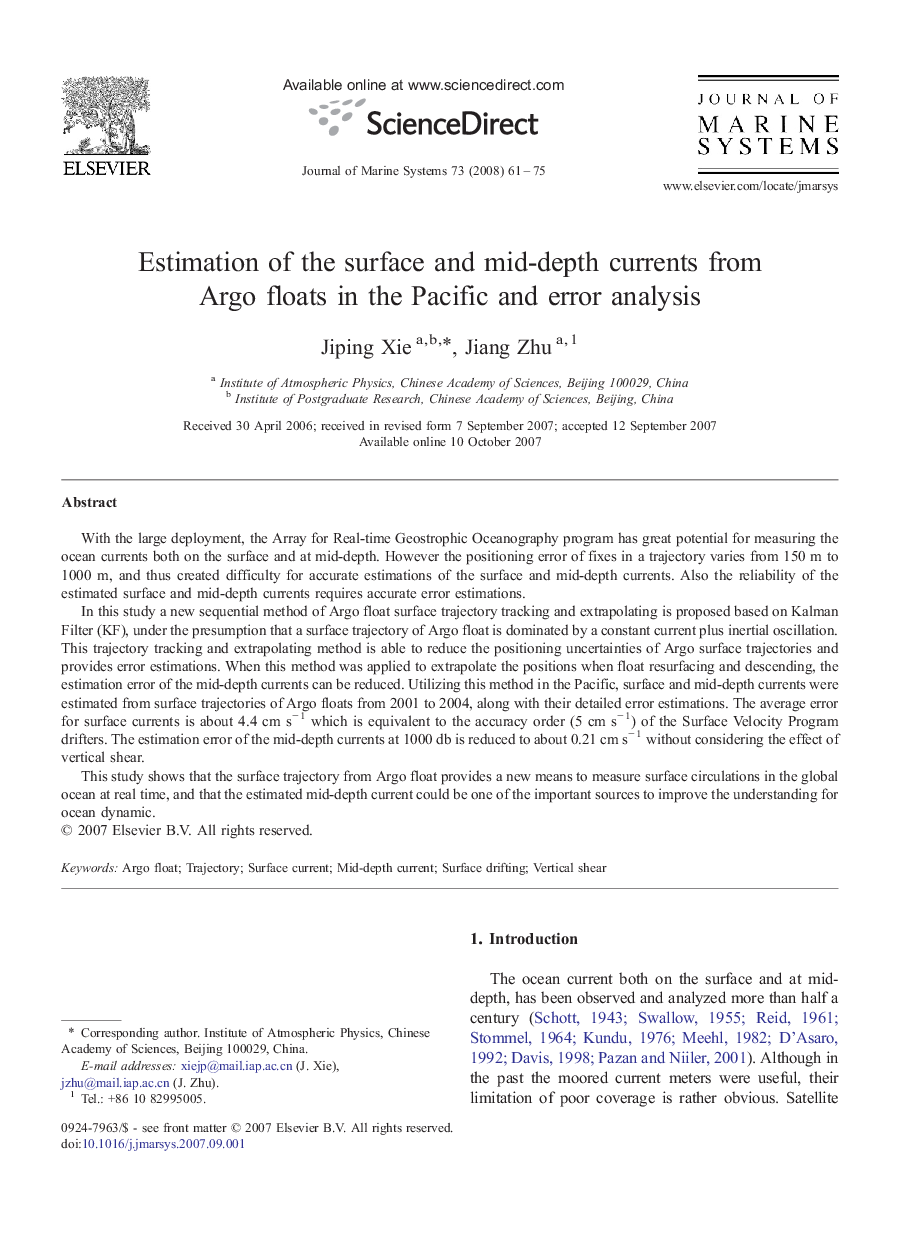| Article ID | Journal | Published Year | Pages | File Type |
|---|---|---|---|---|
| 4548744 | Journal of Marine Systems | 2008 | 15 Pages |
With the large deployment, the Array for Real-time Geostrophic Oceanography program has great potential for measuring the ocean currents both on the surface and at mid-depth. However the positioning error of fixes in a trajectory varies from 150 m to 1000 m, and thus created difficulty for accurate estimations of the surface and mid-depth currents. Also the reliability of the estimated surface and mid-depth currents requires accurate error estimations.In this study a new sequential method of Argo float surface trajectory tracking and extrapolating is proposed based on Kalman Filter (KF), under the presumption that a surface trajectory of Argo float is dominated by a constant current plus inertial oscillation. This trajectory tracking and extrapolating method is able to reduce the positioning uncertainties of Argo surface trajectories and provides error estimations. When this method was applied to extrapolate the positions when float resurfacing and descending, the estimation error of the mid-depth currents can be reduced. Utilizing this method in the Pacific, surface and mid-depth currents were estimated from surface trajectories of Argo floats from 2001 to 2004, along with their detailed error estimations. The average error for surface currents is about 4.4 cm s− 1 which is equivalent to the accuracy order (5 cm s− 1) of the Surface Velocity Program drifters. The estimation error of the mid-depth currents at 1000 db is reduced to about 0.21 cm s− 1 without considering the effect of vertical shear.This study shows that the surface trajectory from Argo float provides a new means to measure surface circulations in the global ocean at real time, and that the estimated mid-depth current could be one of the important sources to improve the understanding for ocean dynamic.
